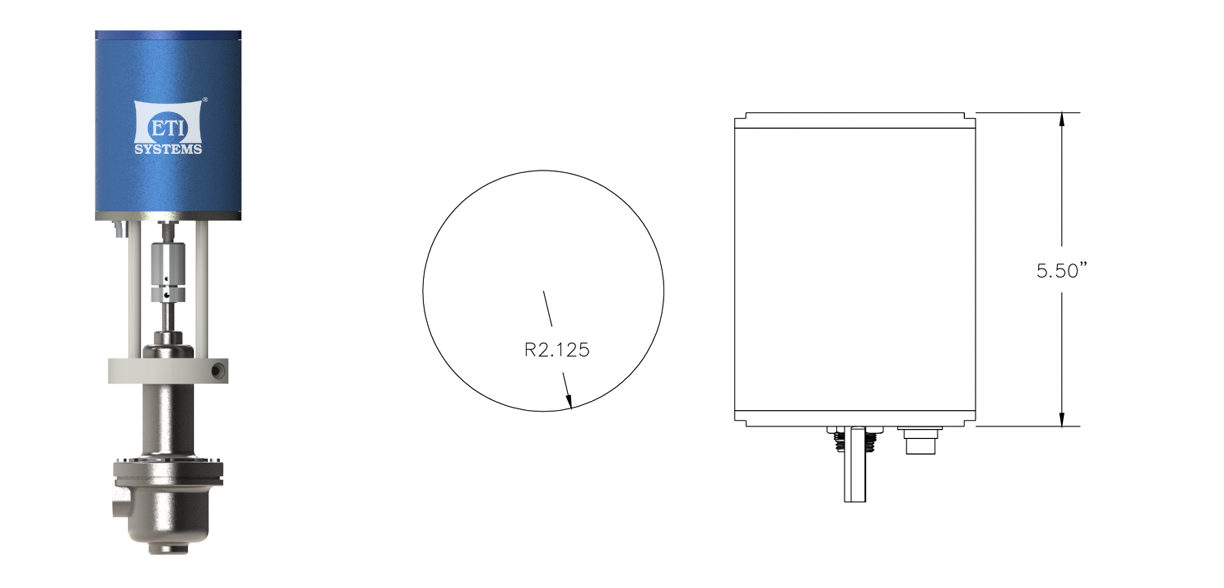Hall Effect Joystick: Enhancing Precision Control in Gaming and Beyond
Are you tired of clumsy controls ruining your gaming experience? Say goodbye to frustrating moments and hello to ultimate precision control with the revolutionary Hall Effect Joystick! Whether you’re a passionate gamer or seeking enhanced control in other fields, this cutting-edge technology is here to take your performance to new heights. In this blog post, we’ll delve into the world of Hall Effect Joysticks, exploring their mind-boggling accuracy, unrivaled responsiveness, and limitless potential. Get ready to level up your gaming skills and unlock a whole new realm of possibilities beyond the screen!
What is a Hall Effect Joystick?
A Hall effect joystick is a device that uses the Hall effect to detect the position of a joystick. The Hall effect is a physical phenomenon in which a magnetic field induces a voltage in a conductor. When used in a joystick, the Hall effect can be used to detect the angle of the joystick and its position in relation to the north or south pole of a magnet. This information can then be used to control an electronic device, such as a video game character or a robotic arm.
The advantage of using the Hall effect in a joystick is that it allows for very precise control. Unlike mechanical joysticks, which can wear out over time and become less accurate, the Hall effect joystick will always return to its original position when released. This makes it ideal for use in applications where accuracy is critical, such as gaming or industrial control.
In addition, the Hall effect joystick is more durable and resistant to environmental conditions such as temperature and humidity. This makes it ideal for use in outdoor applications or in environments where mechanical joysticks may not be suitable.
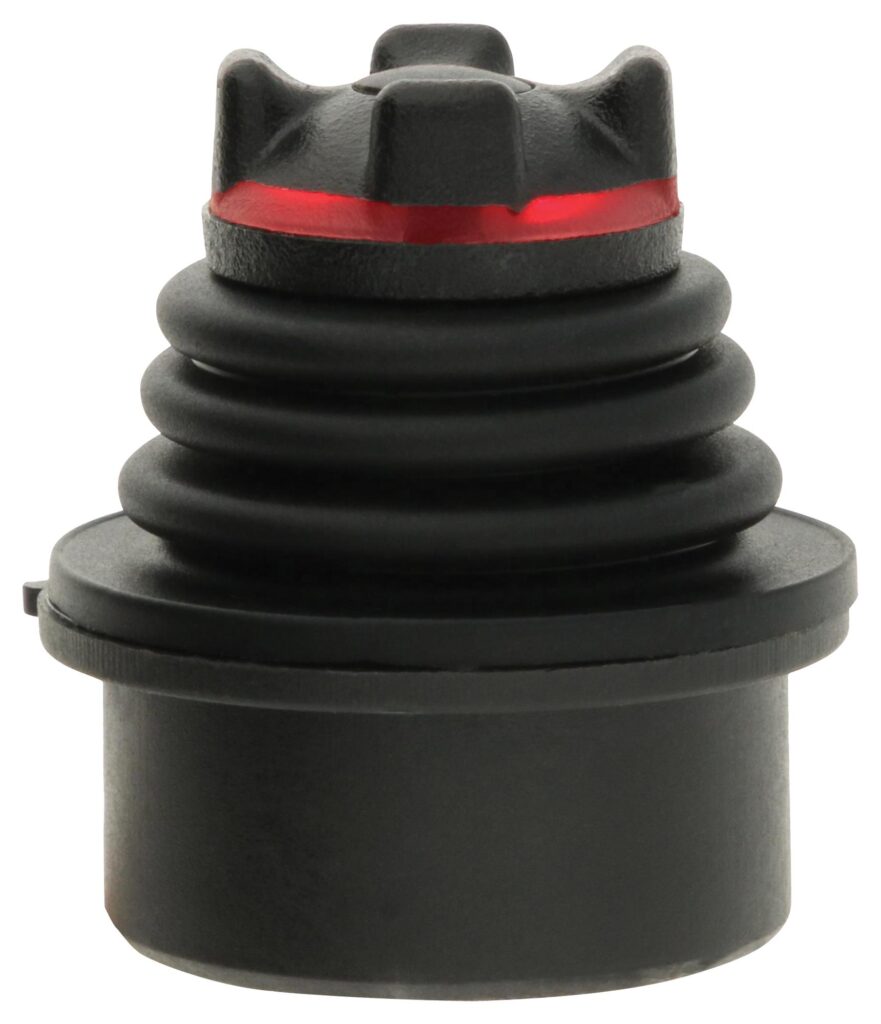
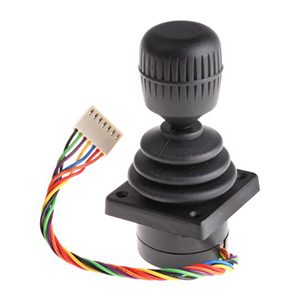
Benefits of Hall Effect Joysticks in Gaming
Hall effect joysticks are becoming increasingly popular in the gaming world due to their precision control and many other benefits. Some of the benefits of hall effect joysticks include:
- Improved Precision Control: Hall effect joysticks offer much better precision control than traditional joystick designs. This is especially important in fast-paced games where quick reflexes are key.
- More Ergonomic: Hall effect joysticks are typically more ergonomic than traditional designs, meaning they’re more comfortable to use for long periods of time. This can be a big advantage during marathon gaming sessions!
- Greater Customizability: Many hall effect joysticks come with customizable buttons and features, allowing gamers to tailor them to their specific needs. This can give you a serious edge over your opponents who are using less customized controllers.
- Enhanced Durability: Hall effect joysticks are usually built with high-quality materials that can withstand heavy use. This means they’ll last longer and won’t need to be replaced as often, saving you money in the long run.
Applications of Hall Effect Joysticks in Other Areas
Hall effect joysticks are not just limited to gaming applications. They can be used in a variety of other areas where precise control is required. Some of these include:
-Piloting drones and other aircraft
-Controlling robotic arms in manufacturing and assembly applications
-Operating cranes and other heavy machinery
-Directing traffic at airports and other busy locations
The benefits of using hall effect joysticks in these applications are the same as those in gaming – improved precision and control, with no mechanical wear and tear. This makes them ideal for use in mission-critical situations where reliability is paramount.
Hall effect joysticks can also be used in the medical field, such as to control surgical robots or for operating MRI scanners. They offer a more precise and ergonomic experience than traditional buttons and knobs, allowing surgeons to perform more complex operations without fatigue. Additionally, they can also be used in controlling prosthetic limbs or other assistive devices.
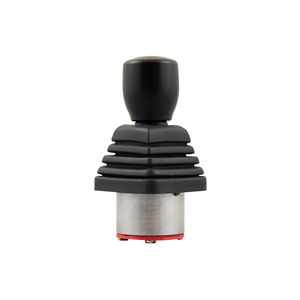

Key Components of Hall Effect Joystick
There are three key components to a Hall effect joystick: the magnet, the Hall sensor, and the processing circuitry. The magnet is attached to the joystick shaft and creates a magnetic field. The Hall sensor measures the strength of the magnetic field and produces a corresponding electrical signal. The processing circuitry interprets this signal and converts it into directional information that can be used by the gaming system or other device.
The magnet is the most important component of the joystick as it determines the range and accuracy of movement. The sensor must be positioned close to the magnet in order to accurately measure the field strength, and so it is usually mounted on or near the joystick shaft. The processing circuitry can be located anywhere, although it is often integrated into the gaming system or other device for convenience.
The Hall effect joystick is a popular choice for gaming applications due to its high accuracy and low cost. It can also be used in a variety of other applications, such as robotics, automotive controls, and medical devices.
How to Install a Hall Effect Joystick
Installing a Hall effect joystick is simple and only requires a few tools. Follow these steps and you’ll be up and playing in no time!
- Begin by disconnecting the power to your system. This is important to avoid any potential damage to your electronics.
- Next, locate the two mounting holes for the joystick on the front of your system. If you’re not sure where they are, consult your system’s manual.
- Using a drill or other appropriate tool, create pilot holes at the center of each mounting hole. These pilot holes will make it easier to insert the screws that will secure the joystick in place.
- Carefully align the joystick with the pilot holes and insert the provided screws. Do not over-tighten as this may damage the joystick or strip the screws.
- Reconnect power to your system and test out your new Hall effect joystick! You should now be able to enjoy enhanced precision control while gaming or using other applications.
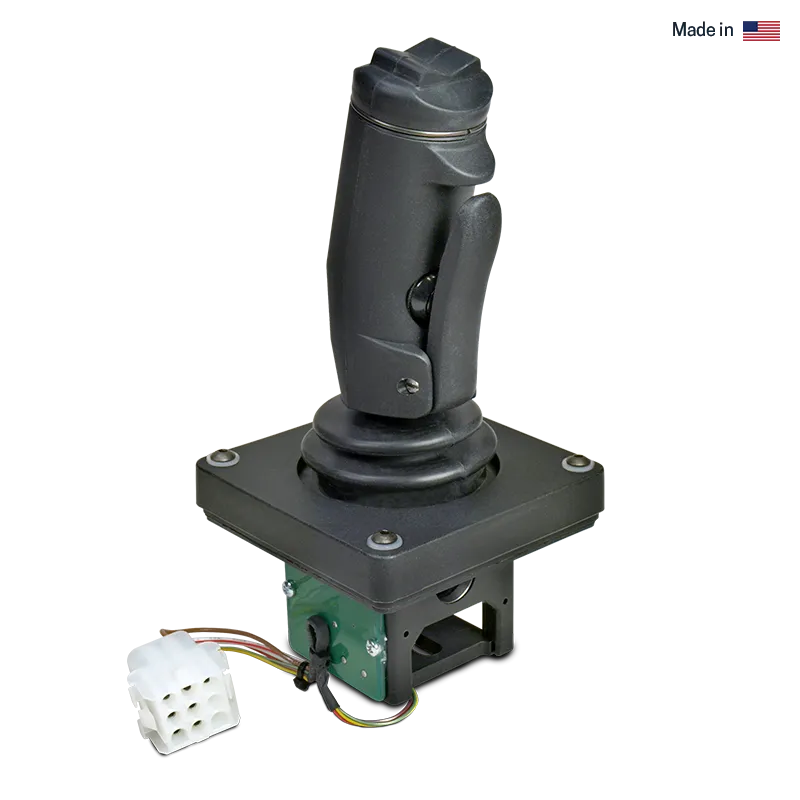

Troubleshooting Tips for Common Issues with Hall Effect Joystick
If you’re having trouble with your Hall effect joystick, there are a few things you can try to troubleshoot the issue. First, check to make sure that the power supply is properly connected and that the batteries are fresh. If the power supply is good and the batteries are fresh, then try resetting the device by disconnecting it from the power supply and reconnecting it. If that doesn’t work, then try calibrating the device. To do this, follow the instructions in the manual for your specific device.
Finally, if none of the above steps solves the issue, then it may be time to replace the Hall effect joystick. Luckily, there are many replacement parts available online that can help get your device working again in no time. Good luck!
Conclusion
Hall Effect Joysticks provide gamers with a more precise control than traditional joysticks, and their potential uses extend far beyond the gaming world. From robotics to automation, Hall Effect Joysticks have become an invaluable asset in many industries as they allow for improved accuracy and reliability when controlling machines or robots. With its growing popularity in both consumer and commercial applications, the Hall Effect Joystick is sure to be around for years to come.
Our Products
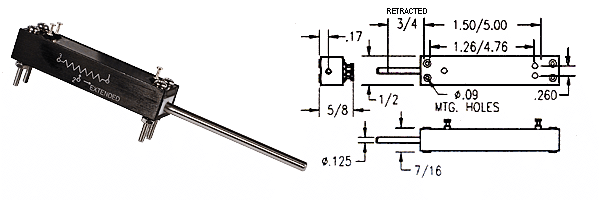
Conductive Plastic Element Black Anodized Aluminum Body, Stainless Steel Shaft, Gold Plated Terminals Recommended for Test and Lab Equipment, Industrial Applications, Medical Equipment (non-life support) Life Expectancy: 20 million strokes Resistance Tolerance: 20% standard (10% Available) Linearity Tolerance: .5% to 1.5% standard (0.3% to 1.0% Available) Power Rating: 0.2 to 1.2 Watt Electrical Stroke: 1″ […]
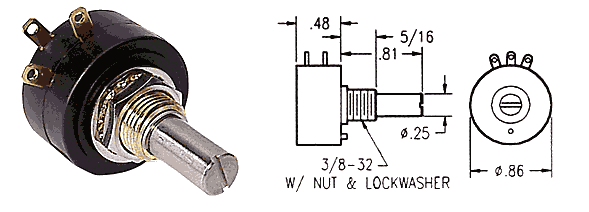
Conductive Plastic Element. Gold Plated Terminals. High Temp. Thermoplastic Housing. Stainless Steel Shaft. Recommended for Medical Equipment (non-life support), Robotics, Industrial, Test and Lab Equipment. Life Expectancy: 10 million turns Resistance Tolerance: ± 10% standard ( ± 10% available) Linearity Tolerance: ± 1.0% standard ( ± 0.5% available) Electrical Angle: 320º ± 5º Mechanical Angle: […]
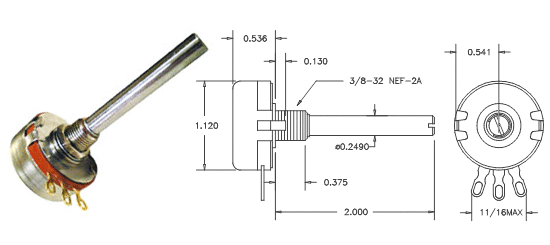
Hot molded carbon element Gold-plated terminals Stainless-steel shaft and housing Quality meeting or exceeding MIL-R-94 – QPL listed Rotational Life: 25,000 Resistance Tolerance: ± 10% or ± 20% Operating Temperature Range: -65°C to +125°C Power rating: 2 watts Insulation Resistance – dry: 10K Meg; wet: 100K Meg Dielectric Strength: 900 VRMS Starting Torque: 1 oz/in […]

Hot molded carbon element One piece housing and bushing Stainless-steel shaft Quality meeting or exceeding MIL-R-94 – QPL listed Rotational Life: 25,000 Resistance Tolerance: ± 10% or ± 20% Operating Temperature Range: -65°C to +125°C Power rating: 0.5 watts Insulation Resistance – dry: 10K Meg; wet: 100K Meg Dielectric Strength: 750 VRMS Operating Torque: 0.5 […]

MG22 Concentric Turns Counting Dial Counts up to 20 turns. One Piece Mounting. Aluminum Housing. Black Nylon Knob. Numbers are White on Black Background. Over the Center Lock Available. Diameter – 7/8″; Extension from Panel – 1.0″ Maximum Panel Thickness – 1/4″ Weight: .2 oz
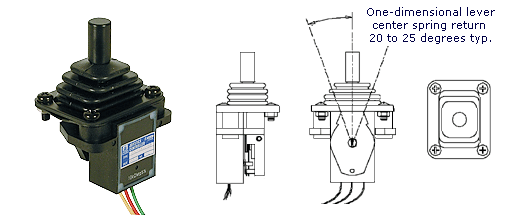
Electrical Specifications: 10K ohm precision potentiometer Single axis joystick Cylindrical knob Linearity (independent): ± 5.0% Lever Electrical Angle: 40° Max. Resolution: Essentially Infinite Mechanical Specifications: ± 20° from center deflection angle Life expectancy: 5 million operations Spring return to center Housing material: High temp. thermoplastic IP65 Rating
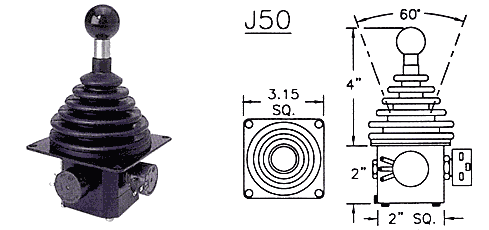
Two axis joystick 4″ handle height 60° deflection angle ( ± 30°) Ball knob Spring return to center Circular deflection pattern 10K ohm precision potentiometer Protective rubber boot (IP54 rating above panel) IP65 option available upon special request Panel mounting bracket

Multi-axis joystick 8.34″ handle height 45° deflection angle ( ± 22.5°) Spring return to center Cobra Head handle Circular deflection pattern 10K ohm precision potentiometers – all axis Three momentary switches (two illuminated, one trigger) Panel mounting bracket Protective rubber boot (IP65 rating above panel)
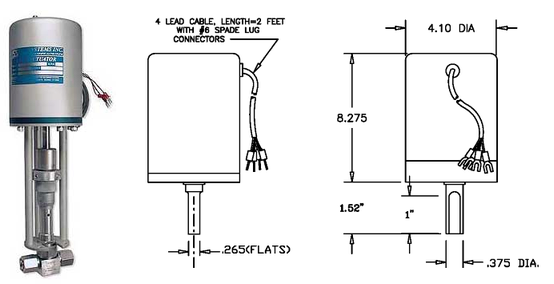
Input: 4 to 20 mA (200 ohms) or 0 to 10VDC (18KΩ) Rotation Speed : 1.5, 3, 5, 10, 20 or 40 RPM Power : 24 VDC (50 Watts min.) Dynamic Braking : Installed Limit Switches : Installed Torque Limiter : Set for Valve requirements. Wt : Approx. 21 in/lbs. max. Seating Limiter : Set […]
